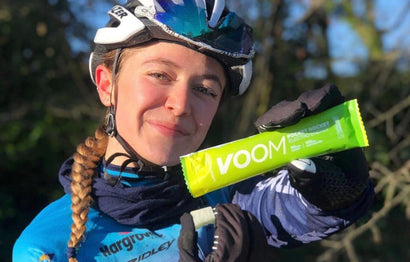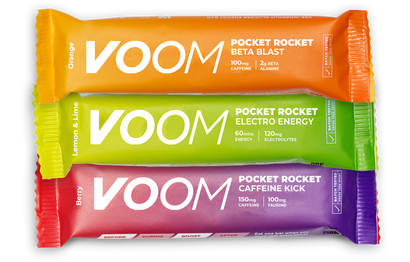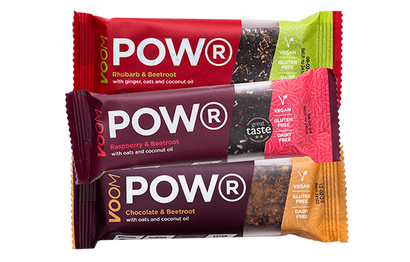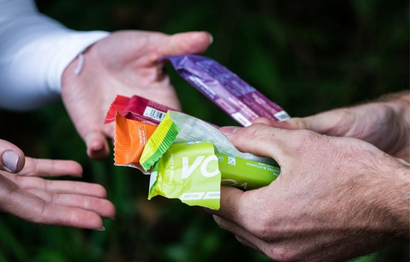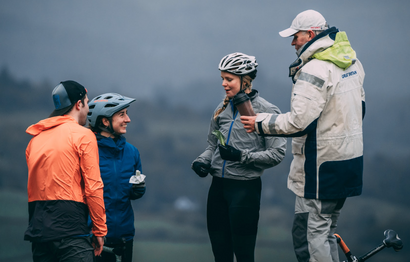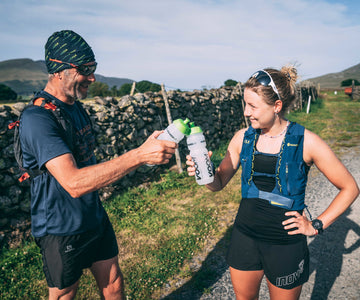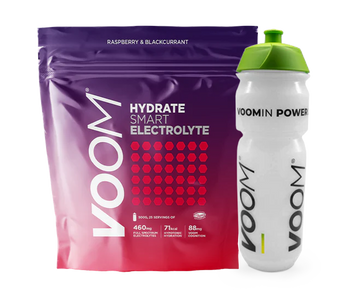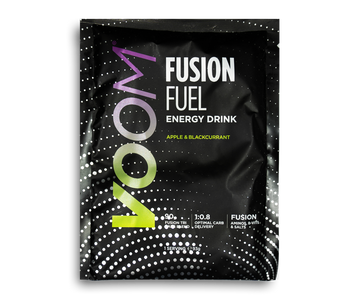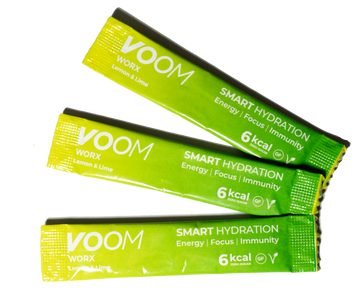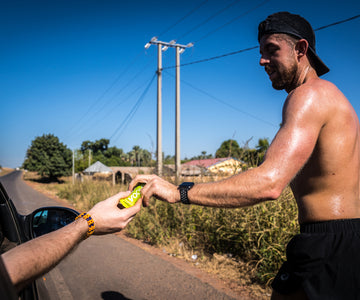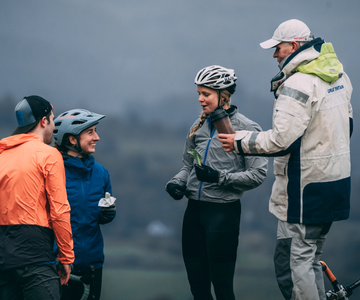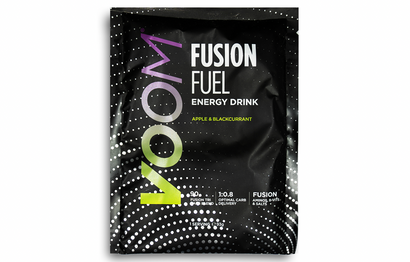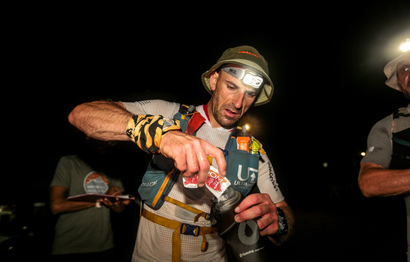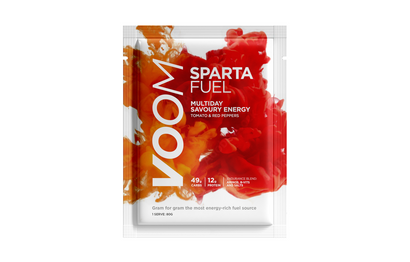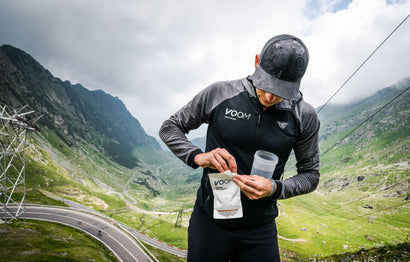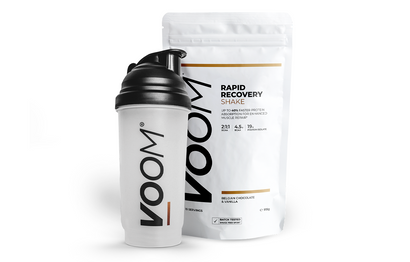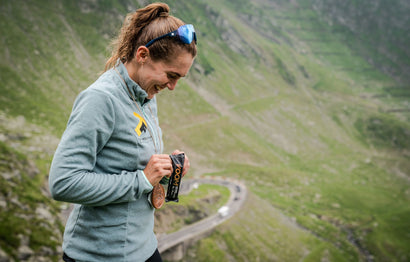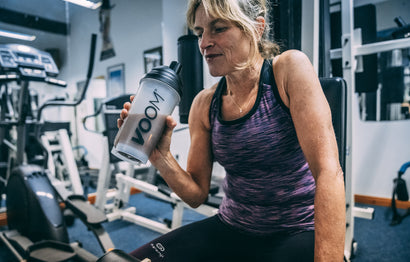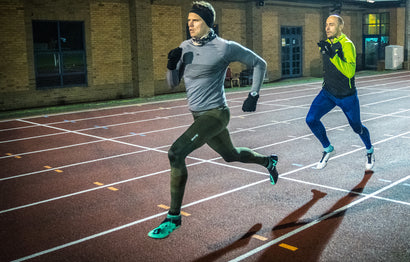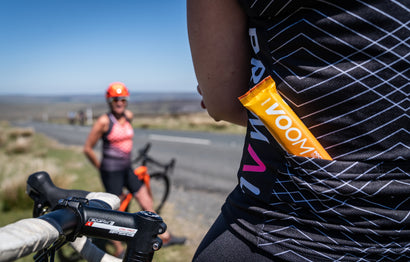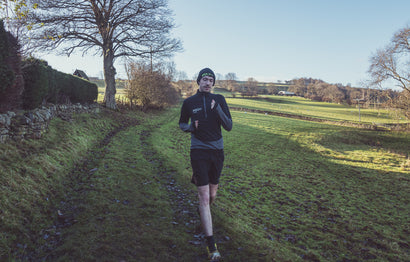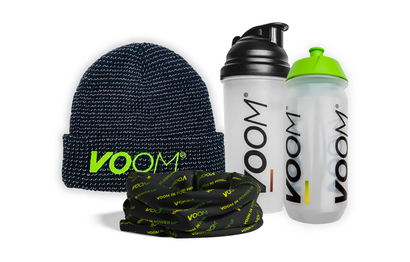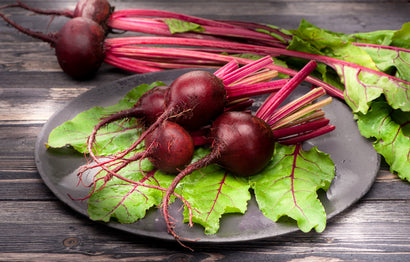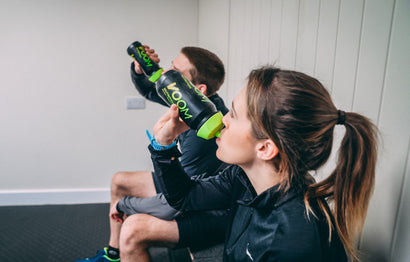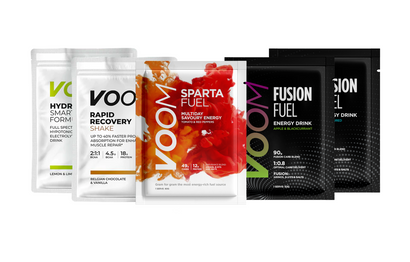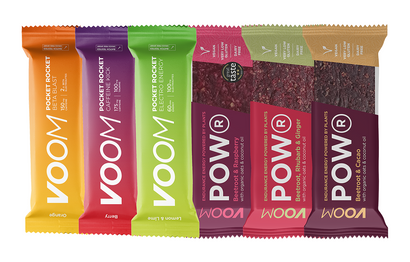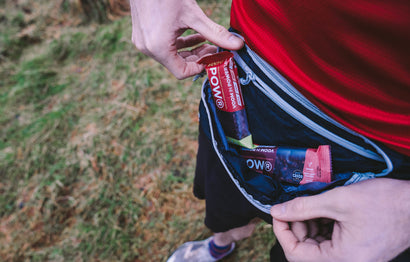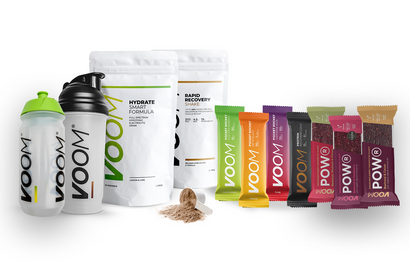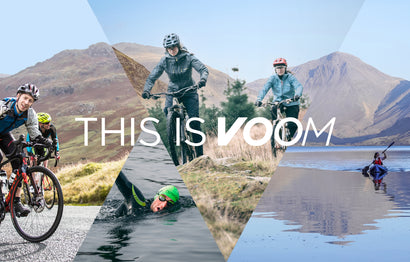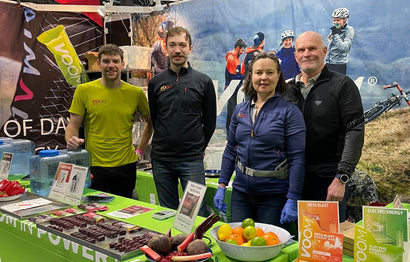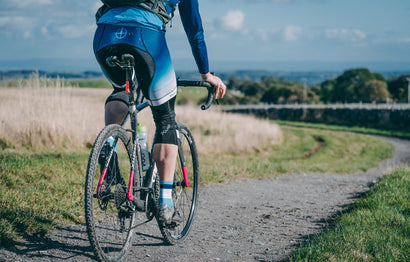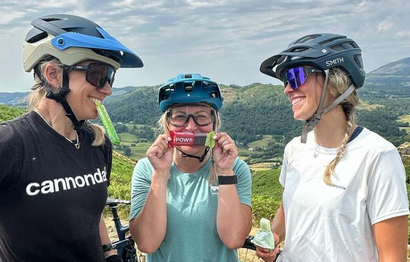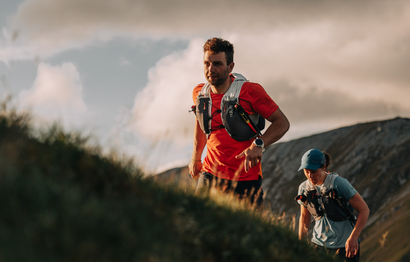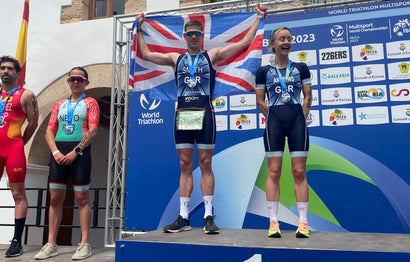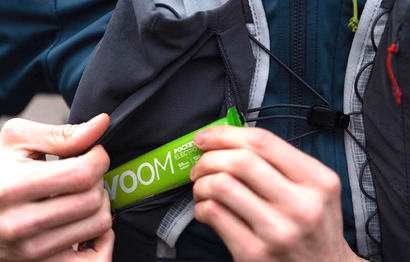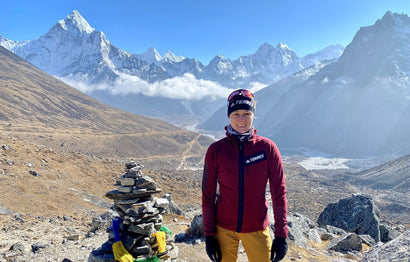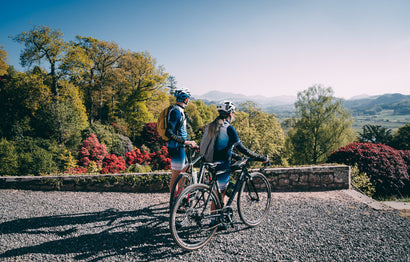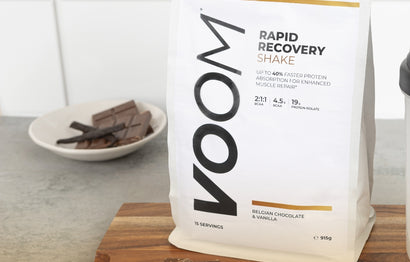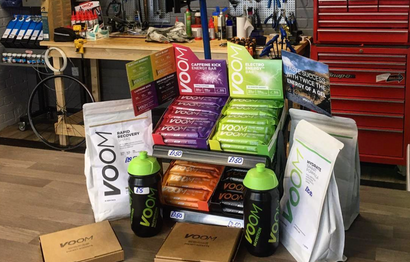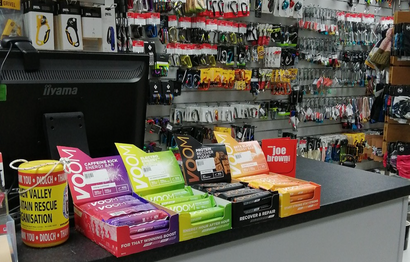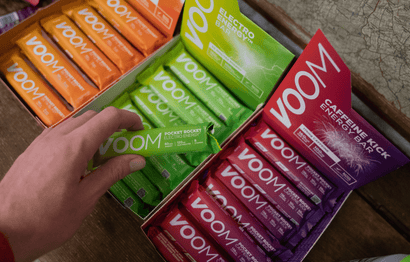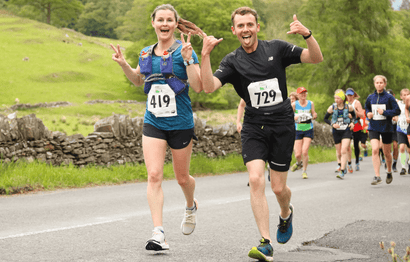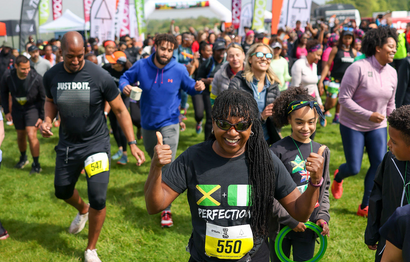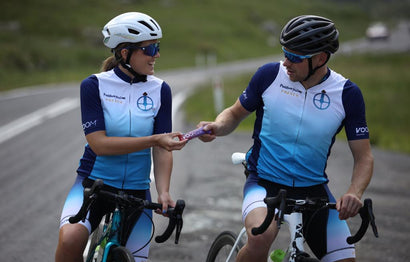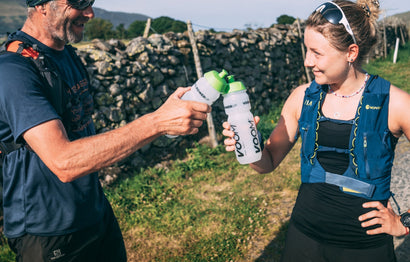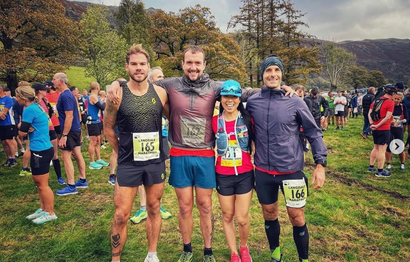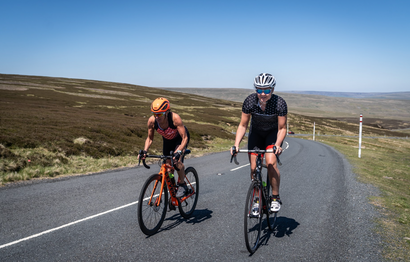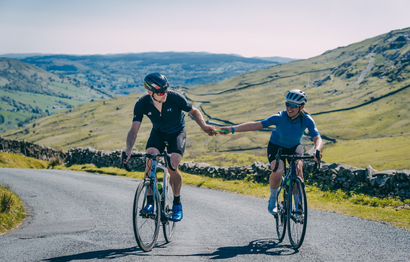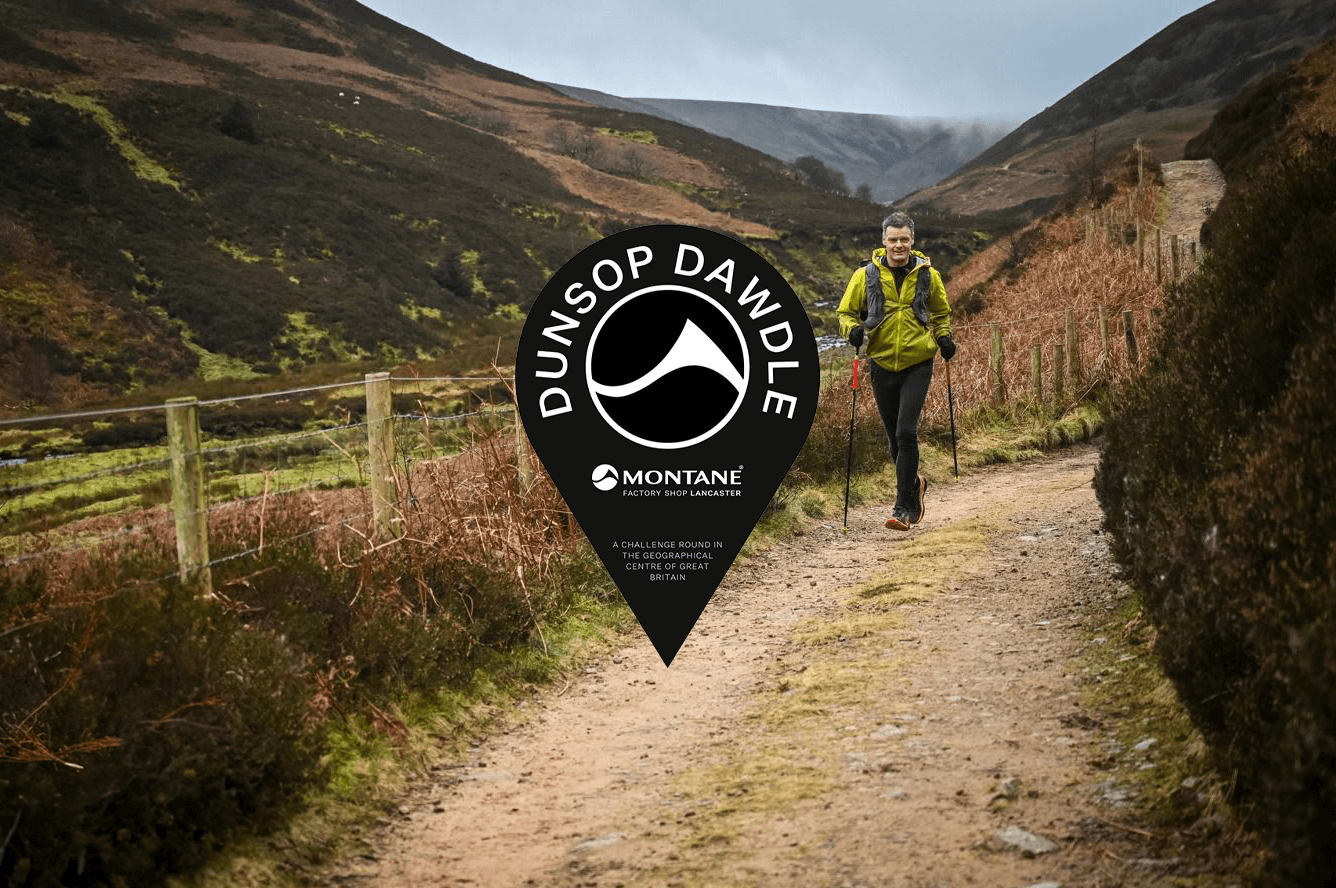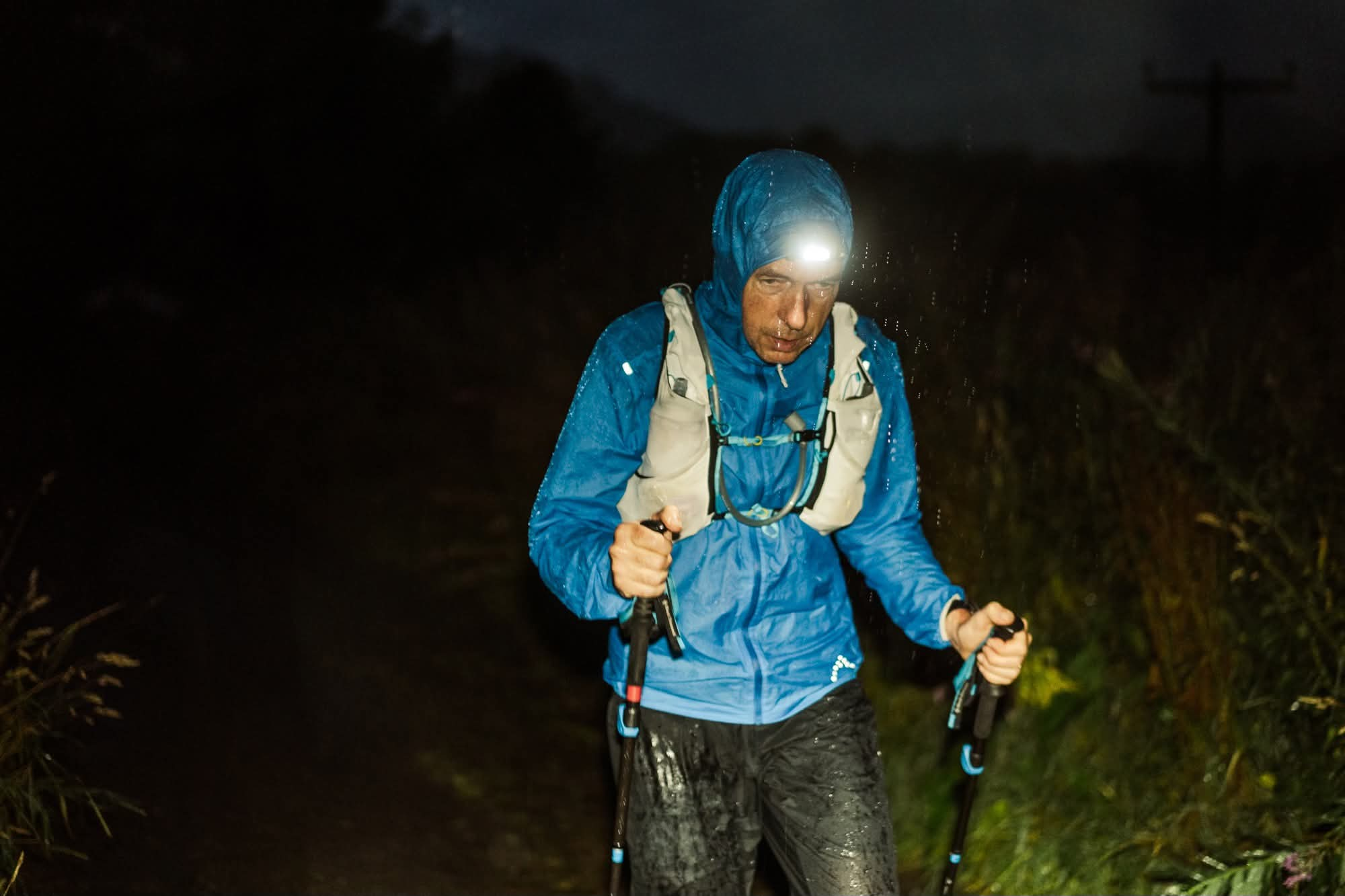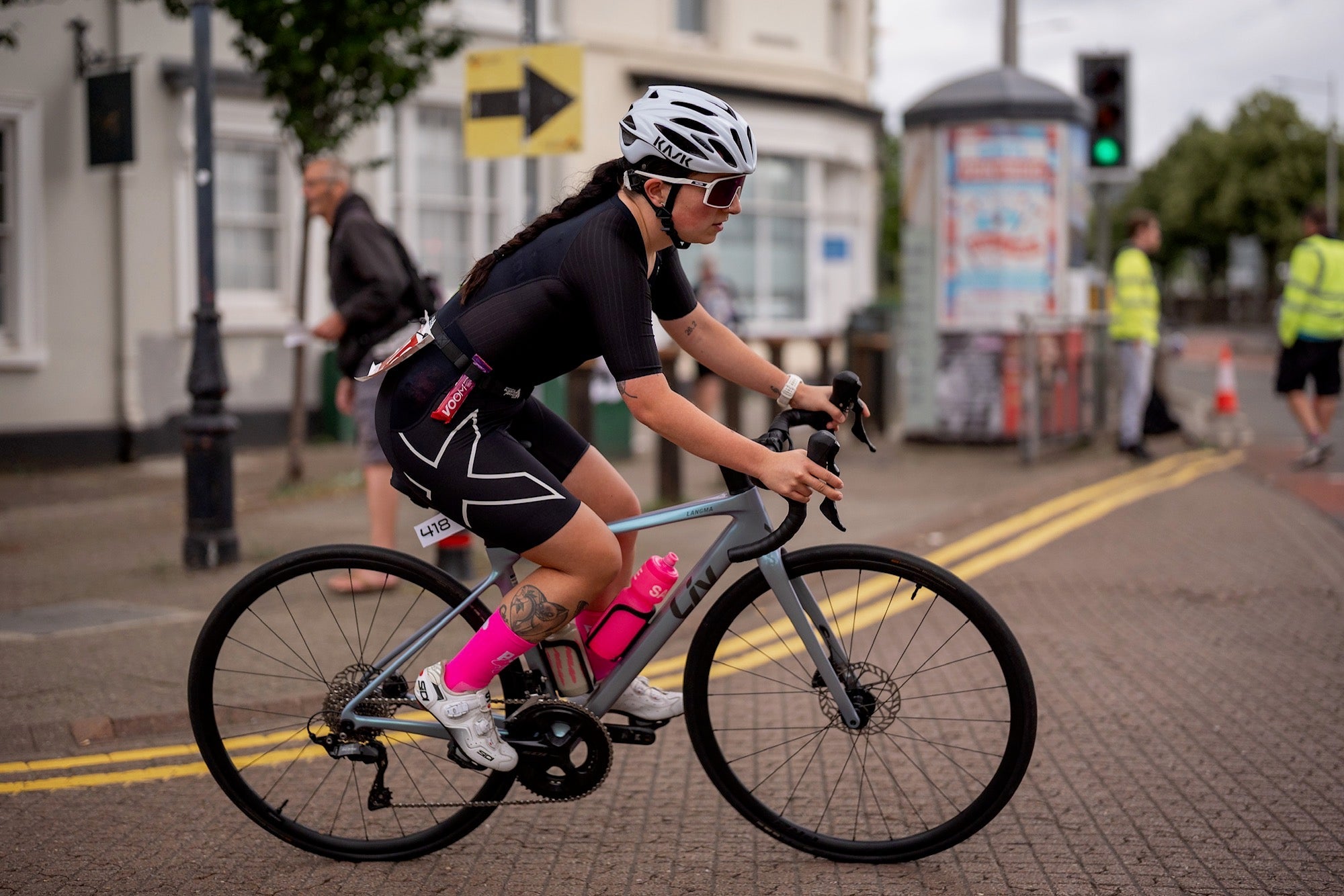The Cape Wrath Ultra is known as one of the UK’s toughest ultra-running events, a brutal eight-day, 400km journey through the remote, rugged, and relentlessly beautiful Scottish Highlands. In 2025, the race delivered everything it’s famous for and more: scorching temperatures, gale-force winds, technical mountain trails, and long, lonely stretches that test a runner’s limits both physically and mentally.
Against this dramatic backdrop, VOOM ambassadors Marcus Scotney and Jon Shield delivered phenomenal performances, Marcus taking a historic win at age 50, and Jon chasing hard to secure a well-earned second place in his debut at the event.
We sat down with both athletes to dive into what it really took to survive and thrive across such punishing terrain. From their emotional highs and lows, to the strategies that kept them moving, to the deeper meaning this race holds for them, here’s what they had to say.
Marcus, you previously won and set the course record at Cape Wrath in 2016 and returned to win again. What inspired you to come back, and how did your approach differ this time?

Ah, Cape Wrath Ultra! Like a mischievous siren, she called me back. After winning the inaugural edition in 2016, I’d always wanted to return and experience that incredible route once more. It’s a truly spectacular trail, and you quickly run out of superlatives trying to describe how breathtaking it is day after day.
2016 was a special race, helped by glorious weather, could it ever be as perfect again? But deep down, I knew there was more to explore, more conversations to have with those ancient hills.
What inspired me to return? The irresistible allure of those untamed landscapes. But also a deeper pull to experience the peace of wild places, rest in the grace of the world, and feel free. This time, my approach was less about conquest and more about communion and disconnection.
I wasn’t sure how my now 50-year-old body would cope with eight consecutive days of demanding running, so it wasn’t about chasing a record, more about letting the record chase me, if you catch my drift! I aimed for a more mindful pace, listening to my body and the land, rather than just my competitive spirit.
It was like swapping a fiery tango for a long, meandering waltz.
Jon, what initially attracted you to take on the Cape Wrath Ultra and what were your tactics going into it?

I was attracted to CW because it was an Ourea Events race, like Dragon’s Back so I knew it would be very tough but also extremely well organised with military precision. It also gave me the ability to see the whole Cape Wrath Trail in a condensed time frame which usually most people take a few weeks to cover which simply isn’t possible for me. I never really have a tactic with a race of this nature because things can and will happen and you have to be able to adapt to the situation. The goal was to be competitive.
Marcus, you’ve spoken about the emotional highs and lows on the trail. Were there any moments that were particularly challenging, and what helped you push through?

The trail, like the physical peaks and glens, is a rollercoaster of emotions. For the majority of the race, I was riding a wave of enjoyment. But there were moments, oh yes, when the lows felt like wading through the soft sand of Sandwood Bay.
Day Four was tough; I rolled my ankle, which added a whole new challenge. And Day Seven really tested me. My left ankle had, metaphorically speaking, left the race, and running on uneven surfaces was deeply unpleasant (and there’s a lot of rough ground on that day!).
Yet, even through the discomfort, I remained grateful. I wasn’t suffering; we choose whether or not to suffer in those moments. I chose gratitude: that I could still move and still witness this stunning place.
I sang to myself, I meditated, focused on my breath or the sound of my feet on the trail. Those small, mindful practices helped me stay present and kept the lows from spiralling.
You’ve raced in a variety of settings, how does the rawness of the Cape Wrath terrain compare to other ultras you’ve done, and what makes it uniquely difficult?
I said during CW and maintain this after that I found it more difficult than any other race I have done. I had some issues with my feet from day 2 which no doubt helped me form this opinion, as 6 days of pain gradually worsening and then becoming constant whilst running but also whilst in camp becomes very draining.

The terrain is brutal, yes not as much elevation as Dragon’s Back but still substantial. What struck me with CW was the fact that although decently runnable a lot of it was also very narrow single track, awkward, rocky stuff and then there was very slow going pathless parts, river crossings which massively slowed you, draining you of energy and taking its toll on the body. I actually think it’s the most awkward terrain consistently I’ve been on, more so than mountainous races, jungle etc.
Marcus, you mentioned reconnecting with friends and the unique bond formed with fellow runners. How important was that camaraderie in getting through the tough days?

The camaraderie! It’s the secret sauce, the magic dust - the human equivalent of a VOOM Pocket Rocket on a low day. The tough moments melt away when you share a laugh, a grumble, or even just a knowing glance with another runner.
This year’s competition was fierce and relentless, with Jon Shield and Lewis Reed pushing me all the way. Their presence kept me sharp, even when things got tough.
There’s an unspoken understanding that forms in the crucible of shared hardship and triumph. We’re all out there, battling the same elements, the same fatigue, and having someone beside you who gets it is invaluable.
The camaraderie goes beyond fleeting trail chats; it lives in the friendships forged at camp, in the quiet encouragements when someone’s spirits are flagging. It’s like a travelling circus of slightly mad, very determined individuals, and that bond is priceless.
How did you both manage your recovery and nutrition between stages to stay competitive across such a long, demanding event?

Marcus Scotney: My fuelling strategy was one of the simplest and most consistent parts of the week: 90 grams of carbs an hour, basically two Pocket Rockets every hour.
As a coach and athlete, I’ve really embraced the sports science behind higher carb intake during endurance efforts. I’d trained with 90–100 grams of carbs per hour on any run over 70 minutes, which massively improved my recovery and trained my gut to handle the intake.
During the race, I had no issues taking in the VOOM bars, even in the heat. I especially looked forward to the Beta Blast in the later part of the day for an extra boost. Post-stage, I always had a Rapid Recovery shake.
Upping my carbs to 90 grams an hour made a huge difference. I had no DOMS (delayed onset muscle soreness), and I honestly believe it’s why I raced stronger than in 2016, when I was possibly getting by on just 15 grams an hour!

Jon Shield: Recovery starts before and during each stage, not just after. I’d always eat a decent breakfast then I’d usually eat a Cocoa/beetroot bar before setting off. Due to the unusually high temperatures for the race hydration was also very important. I had x 2 sachets of Fusion Fuel filled from the start with another bottle of Hydrate. I’d sip the hydrate constantly whilst also using the Fusion Fuel. This gave me 90g of carbs in each bottle (2 hours of fuel as the minimum) to start with and the electrolytes required.
After this I relied on getting water from streams with a filter and using chlorine tables to purify. I would then switch to Pocket Rocket Electro Energy bars with their 45g of carbs and electrolytes as attempting to empty sachets, using this with filters and so on doesn’t really work.
Marcus the Highlands clearly mean a lot to you. What makes the Cape Wrath Ultra route feel so personal or spiritual compared to other races?

The Highlands… I’m a bit biased now that I live in the Southern Highlands, but the Cape Wrath Ultra isn’t just a race, it’s a pilgrimage to the northernmost point of Scotland.
There’s something ancient and untamed about the landscape that reaches deep into your bones. Other races are fantastic, don’t get me wrong, but this one feels so wild. You’re not just running through scenery; you’re becoming part of it.
The vastness makes you feel tiny and yet deeply connected to something greater. It’s a place where you strip away the everyday and reconnect with the wildness within yourself.
Wendell Berry’s poem “The Peace of Wild Things” captures it beautifully: “I come into the peace of wild things... I come into the presence of still water... I rest in the grace of the world, and am free.”
That’s what the Cape Wrath Ultra offers. It’s less about conquering the land and more about surrendering to its majesty. It feels personal because it challenges you to confront yourself. And spiritual - because you can’t help but feel awe and a deep, liberating sense of freedom.
Jon, were there any particular sections of the course, technical, scenic, or mentally tough that left a lasting impression on you?

Honestly the whole route was breathtaking, highlighted by great weather for 6 of the 8 days but the decent towards Mam Barrisdale on day 2 was a particular highlight with an incredible view. The whole race was incredibly tough for me, it nearly took my soul several times - but that’s why I do these races, by doing hard things, nothing is given or taken for granted. There’s no guaranteed result, you find out more about yourself when you’re uncomfortable, you are more capable than you think you are. CW certainly grew The Pain Cave.
Marcus, with the wild swing in conditions, heat early in the week and fierce storms at the end, how did your body and mindset adapt as the race unfolded?

The Scottish weather, the master of plot twists! We were blessed with glorious sunshine early on, which, while beautiful, brought its own challenges. The dry terrain and dried-up burns made hydration trickier. On Day Three, I had to ease back rather than push as hard as planned.
After Day Two, it even looked like I might break my 2016 course record, but that ambition faded after I rolled my ankle on Day Four.
The first six days were sun-soaked, practically calling for an ice cream. Then came Day Eight, as we ran to Sandwood Bay, and we were bracing ourselves against a gale that felt like it might personally relocate us to the next postcode.
My body and mindset became rather chameleonic. On the final day, the wind and rain only added to the challenge. But instead of resisting, I embraced it. You learn to find beauty in the rain, to laugh (or cry a little) at the madness of it all. It’s a constant dance of adaptation, a reminder that you’re never fully in control. And that’s strangely liberating.
Marcus, looking at the 2025 race compared to 2016, what stood out most to you about how the event has evolved, or challenged you differently?

Comparing 2025 to 2016 is like comparing a beloved classic film to a beautifully remastered edition. The core story remains the same, an epic journey through the Highlands, but the production value has gone up a notch.
It was amazing to see how the event had evolved over nine years. Life at camp often felt like a holiday, with delicious food, endless hot drinks, and an event team that was always supportive and smiling. A huge shout-out to the medics, who cared for us with such professionalism. What stood out most was how the race had retained its wild heart while becoming even more polished and seamless in logistics and support.
This time, the challenge wasn’t about the unknown. It was about performing under the weight of previous success and navigating my 50-year-old body through eight gruelling days. In 2016, I was just eager to see what I could do. In 2025, there was a different kind of pressure to live up to the past while embracing the present. The competition was tougher, too, Jon and Lewis really pushed me. It forced me to find a new kind of mental resilience, to let go of expectation and just run my race, whatever that looked like on the day.
Crossing the finish line was deeply emotional. Tears of joy and relief streamed down my face. I had just completed one of the toughest events I’ve ever raced, in some of the toughest conditions I’ve faced. In that sense, 2025 was even richer, even more rewarding.
If you’re looking for a once-in-a-lifetime race through some of the most stunning scenery the Scottish Highlands has to offer, the Cape Wrath Ultra should be top of your list.
I promise – whatever the weather – it will not disappoint.
Jon, will you be back to take on the Cape Wrath Ultra again and what would you recommend anyone wanting to do it for the first time?
Will I be back… more than likely! I might do a Marcus!
Try What Fuelled the Podium Finishers

Inspired by Marcus and Jon’s incredible performances? If you’d like to experience the same powerful fuelling they used during the Cape Wrath Ultra, we’ve got something for you.
Use the code CAPEWRATH at checkout to claim a free taster pack of your choice from our Running Club range.
👉 Choose your pack here
Fuel smart. Run strong. Push your limits with VOOM.

